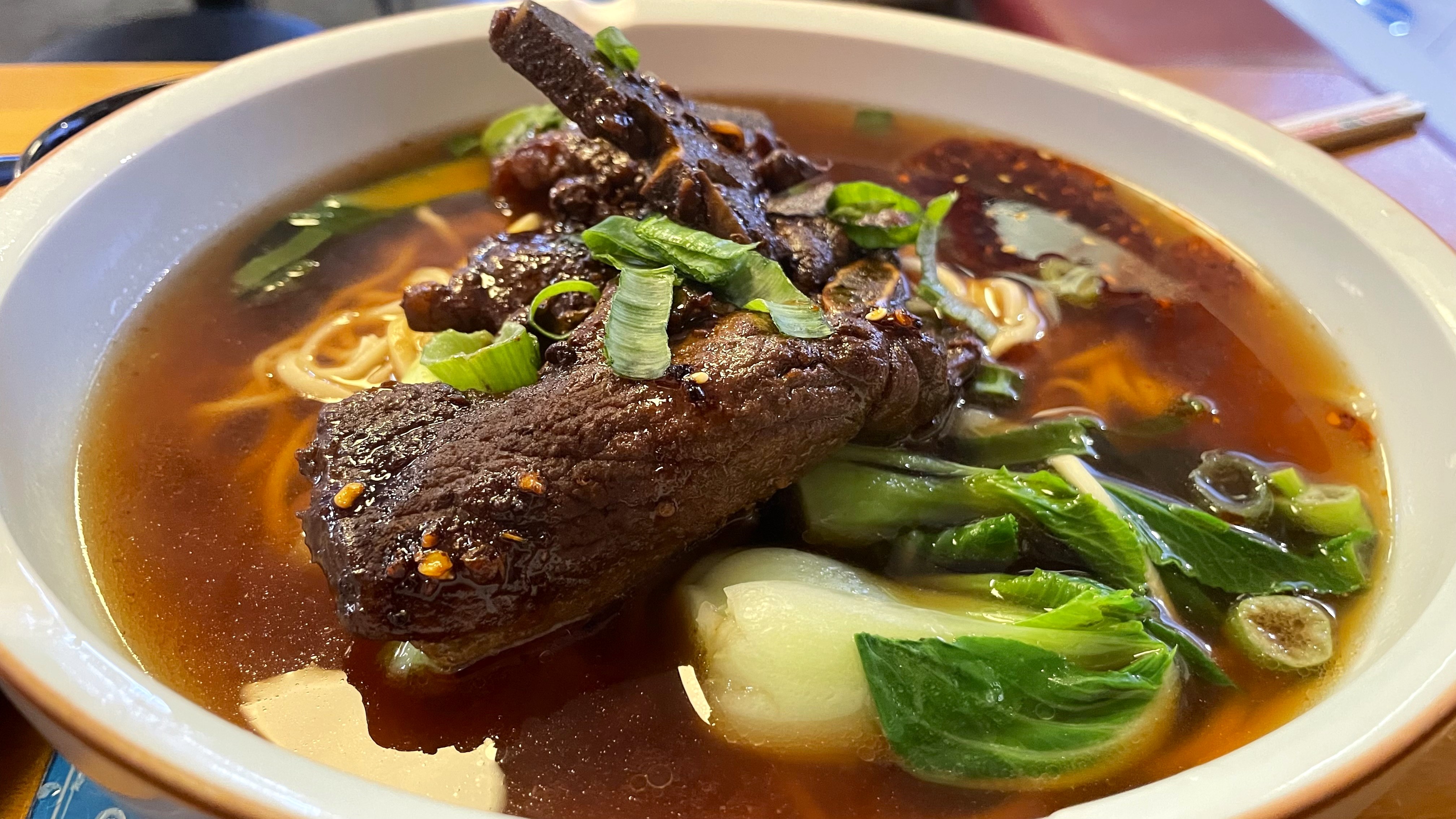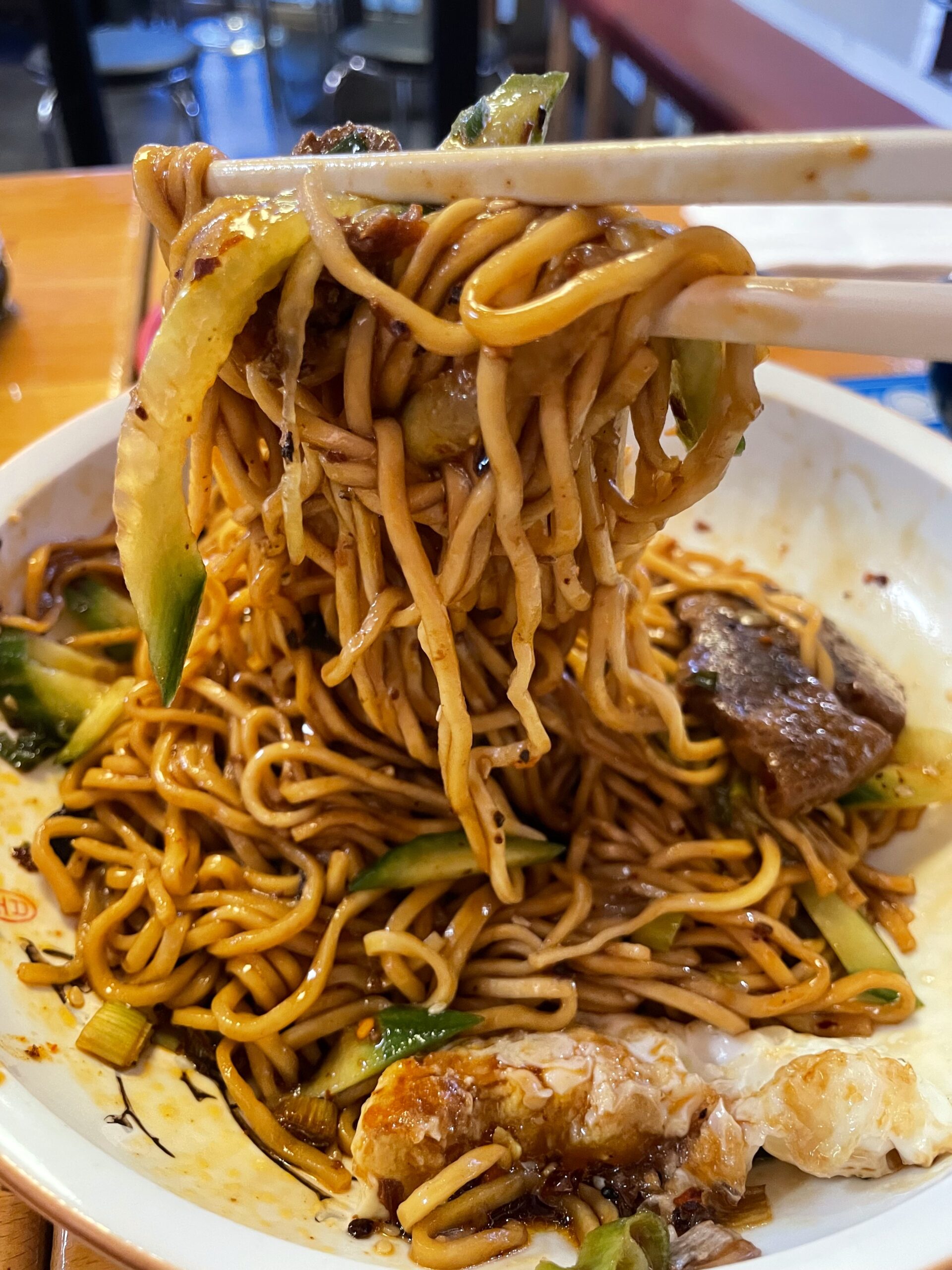Welcome back, fellow foodies! Today we’ll invite you to step in to a humble little Shanghainese eatery, located at the Hauptwache subway station. This charming spot offers a very diverse menu. Starting from delicious little snack like the iconic Xiaolongbao (soup dumplings) to hearty main meals like Shanghai-style noodles, there’s something for almost every palate and appetite.
We’re regulars at this restaurant, and have got a bunch of tasty dishes to recommend. No time to waste – let’s dive right in!
Restaurant Profile
- Name of the Restaurant: Feinschmecker 好味道
- Adress: Allianzpassage Laden 45, An der Hauptwache 7, 60313 Frankfurt am Main
- Style: Chinese/Shanghainese snacks, dim sum, noodles
- Price: around 10 – 15 EUR per Person (incl. drinks)
Xiaolongbao (soup dumplings): These are perhaps the most famous Shanghai dish in the world. They’re steamed dumplings filled with pork and a savory broth. Made from a century-old recipe dating back to the late Qing dynasty (1644 to 1912), they’re crafted with precision using fine flour for delicate, thin skins and filled with savory pork and a rich broth.

Many wonder how the soup gets inside the dumplings – that’s the magic of Xiaolongbao. The secret lies in simmering a broth with free-range chicken (or mature hen) and pork skin, then turning it into a jelly-like consistency to mix into the filling. As the dumplings steam, the jelly melts into a mouthwatering soup, bursting with flavors.
With each bite, you’ll be treated to a burst of juicy goodness, a fragrant aroma, and a hint of sweetness. Just beware of their piping-hot interior – it’s best to start by gently nibbling the thin skin to sip the savory broth, then enjoy the remaining dumpling dipped in vinegar and/or chili sauce for an explosion of flavors.

Shengjianbao (pan-fried dumplings) is similar to xiaolongbao but pan-fried on the bottom, giving them a crispy texture. Affectionately dubbed “Shengjian” by the locals, it’s a staple food and has been loved by generations of Shanghainese. At this place, the Shanghainese chef makes them just right – a crispy bottom, soft, moist skin, and a juicy, flavorful filling of savory pork meat, fragrant oil, aromatic spring onions and nutty sesame seeds – each bite gives away a luscious blend of lingering flavors!

Dumplings and baozi are beloved staples in Chinese cuisine, known for their endless variety and regional diversity. Originating from different regions and crafted with unique cooking techniques, some variations may seem similar at first glance, but each offers a distinctly different taste.
The Veggie Mushroom Bun (or baozi in Chinese) is a classic vegetarian dumpling, with just two simple ingredients – Shanghai pak choy and mushrooms – but incredibly delicious. The skin is soft, mild and slightly puffy, allowing you to fully taste the sweet freshness of the greens and the tender juiciness of the mushrooms. The clean, fragrant taste makes it a very soothing dish.

Shanghai Shumai is one of my top snack picks! Round and plump, with a snug seal, each one looks like a treasure bag, glistening with oil-kissed, shiny glutinous rice grains.
The glutinous rice is the main ingredient, infused with a dash of minced meat, mushrooms, seasoned with pork fat and soy sauce. They may not be too big in size, but each bite is solid and firm. The slightly chewy skin and the rich, dense, sticky rice create a meaty and hearty sensation. With occasional bites of meat and mushrooms adding a burst of flavor, it’s incredibly satisfying to eat!

“上海豆腐脑” (Shanghai Dou Fu Nao), also known as Shanghai-style tofu pudding, is a cherished Shanghai cuisine. It consists of soft, silky tofu served with various toppings: soy sauce, nutty sesame oil, chopped scallion, dried shrimp and seaweed. These toppings add layers of savoriness, umami and crunch, perfectly complementing the creamy, smooth tofu and its subtle bean sourness. Known for its delicate, comforting and mild taste, it’s a popular choice for breakfast or as a snack for the locals.

Shanghai-style noodles are usually satisfyingly thick and slightly chewy. Served in a variety of ways – with broth or dry, with meat or only vegetables, soothingly warm or refreshingly cold – they’re very versatile and bursting with flavors!
大排面 (Da Pai Mian) is a noodle dish, where tender pork chops and pak choy sum luxuriate in a rich, flavorful broth. Stewed in a mix of soy sauce, sugar, ginger, garlic and star anise, the succulent pork and broth boast a rich, savory umaminess and a hint of sweetness. Caramelization of sugars during the braising gives the meat an appetizing reddish-brown hue. With the bones infusing richness and depth, every slurp promises robust, heaty and meaty goodness.

Amidst the array of traditional delicacies, the 辣肉面 (La Rou Mian or Noodle Soup with Pork Goulash) firmly secures its place on the menu of almost every Shanghai noodle house. It’s made with diced pork, sauteed with fragrant spices and chili sauce, then generously poured over the noodles. With a touch more soy sauce and just the right amount of white sugar, it not only brings out the richness of the meat, but also balances the heat of the chili. The pork dice, not too large to avoid tasting blend, nor too small to lose moisture during cooking, ensures a flavorful juicy bite each time. The broth may not be thick, but its flavor is abundant, delivering a natural blend of saltiness, spiciness and a subtle sweetness.

Spring onion noodles with fried egg and fresh cucumber (葱油拌面 Cong You Ban Mian) is a simple household dish in Shanghai. The soul of this dish lies in the making of the spring onion oil. As the hot oil sizzles, it extracts the fragrant essence of the spring onion. Its rich aroma captured and sealed within oil, mingles perfectly with every toss of the noodles, releasing distinct earthy, pungent and refreshing flavors. Add a little vinegar and homemade chili sauce for a spicy, sour and invigorating note!
A quick hint: For noodle dishes sans soup, remember to stir thoroughly, ensuring every strand is coated in savory sauce for full flavor!


As summer approaches, some of you may want to take a break from warm dishes. So, we’d like to recommend 2 refreshing cold noodle dishes that’re very appetizing and just right to beat the summer heat.

Cold Noodles with Shredded Chicken (or 鸡丝凉面 Ji Si Liang Mian) is a traditional Sichuan delicacy. Feinschmecker gives it a Shanghai-style twist by balancing the flavors for a smoother and more even taste. It features tender chicken, crisp veggies, and chewy noodles, all coated in a thick, flavorful sauce. It’s got a kick from chili oil, a tang from vinegar, a hint of sweetness from sugar, and an umami richness from soy sauce and oyster sauce. Topped with the pungent, aromatic green onions, ginger, and garlic, and crunchy, refreshing cucumber and carrot strips that complement the smoothness of the noodles and chicken, it’s a dish perfect for hot summer days!

凉皮 (Liang Pi), or Cold Skin Noodles, is a popular dish originating from Shaanxi, China. It consists of smooth, firm, and translucent wheat noodles, topped with julienned cucumbers, fresh cilantro, wheat gluten, garlic water, chili oil, sesame paste, and vinegar. The result is a refreshing, yet complex and layered blend of flavors – garlicky, umami, sour, spicy and nutty – that completely whets the appetite, even on a sweltering summer day!

Another quick tip we’d like to share with you is their lunch plate special. It comes with a selection of 5-6 meat or veggie dishes, including the iconic Mapo Tofu, Red-Braised pork (Hongshao Rou), and generously sized pork meatballs (Shizi Tou). For just around 10 euros, you can customize your plate with 3-4 dishes of your choice, with or without meat. The lunch offer is incredibly popular, so expect long lines during peak hours. But if you arrive around 11:30, you’ll usually having no trouble snagging a table.
Shanghai cuisine is characterized by its delicate mix of sweet, savory, and umami notes, as well as simple, balanced seasoning. Due to its lighter and less spicy nature, it tends to be more approachable for people not used to bold, spicy Asian/Chinese cuisine. So, if you’re eager to explore, especially if you’re new to Asian/Chinese food, this restaurant can be your perfect entry point.




